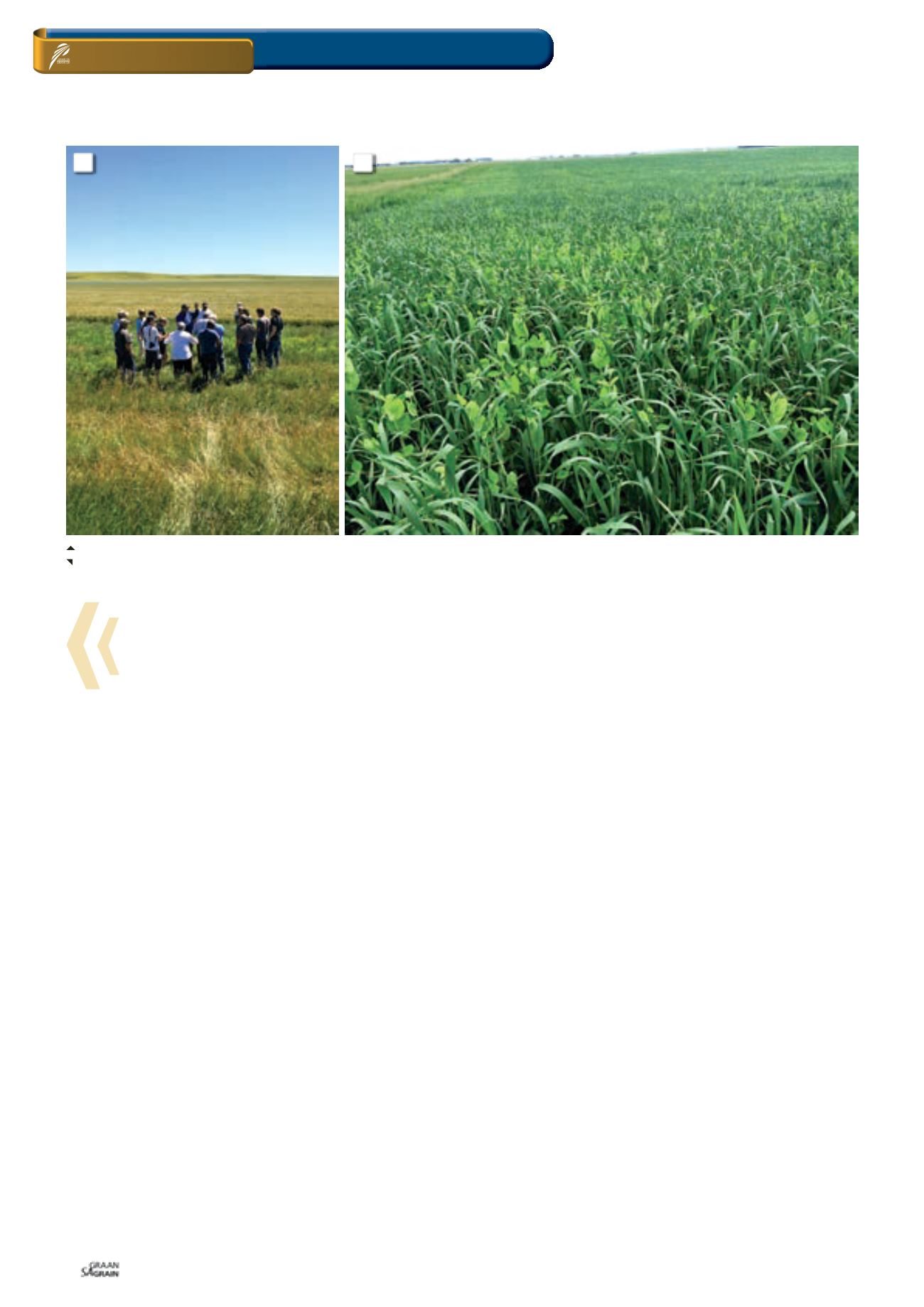

Desember 2014
14
“Stacked enterprises” – integrating various enterprises, e.g.
crop-livestock system – has proven to be very conducive to the
sustainability of these producers. “Rather diversify, since we pro-
duce too much grain in the world,” says Brown.
A key message from Brown and other producers, was to “work
with Mother Nature and the rules of ecology, since ‘everything is
connected’, let nature do it.
“If you have a problem, ask yourself what you have done wrong
which nature is trying to correct.” Most of them agree that in
100 years, we will have to be 0% fossil fuel driven.
Soil health and fertility
The clear message is that “we must treat soils as we are supposed
to treat all other living things on earth – with respect”. Soil is the
heart of the CA system, and if we “take care of the land, the land will
take care of us”. Healthy soils will lead to all sorts of other benefits,
ultimately resulting in long-term productivity and profitability.
According to the USDA, managing for soil health (improved soil
function) is mostly a matter of maintaining a suitable habitat for
the myriad of creatures that comprise the soil food web.
Producers should know if their nutrients are cycled or “leaking”.
Ecosystems that leak nutrients (including carbon) for extended
periods of time are degraded. We should move away from the idea
that the soil acts more or less like a static recipient of nutrients or
a “bank from where producers’ money is constantly leaking out
of”. Adding chemical mixtures to soils without organic matter is
inefficient.
Diversified cropping systems
Diversified cropping systems are necessary to increase resilience
and accelerate the build-up of soil organic matter (SOM). It is the
main driver of sustainability due to nutrient cycling and improved
soil- and agro ecological health.
Almost all of the agronomic problems producers face (weeds,
diseases, insects, fertility, etc.) can be traced to problems with
ecosystem processes. In this respect, we must recognise the
destructive impact of tillage on soil and water (both on and off site),
as well as the lack of diversity.
It is always advisable to compare the costs and benefits of diverse
cropping systems (biological control) with the costs and benefits of
chemically controlling pests, diseases, weeds, fertility, etc. in the
long term.
Rotations that are not consistent in terms of either interval or
sequence provide the best protection against species shifts and
biotype resistance. An example is “stacked rotations”, one of the
less well-known approaches of crop rotation, which have crop type
to crop type intervals of a minimum of two years somewhere in the
rotation. This includes rotations where crops, or crops within the
same crop type, are grown in succession (normally twice) followed
by a long break, which is the way that plants sequence in nature.
Perennial sequences are an excellent way to jump start the system.
However, the desire to increase diversity and intensity needs to be
balanced with profitability. In general, the crop yield figures observed
among the CA producers in the USA doubled with the same fertiliser
levels, or stayed the same with much less fertilisers (primarily due to
improved soil health).
Cover crops
Most CA producers and other practitioners in the USA agree that
the introduction of cover crops into cropping systems require a
major change in philosophy and practice. Their advice is to treat
it as a cash crop; it does pay. Cover crops have multiple roles and
functions and each producer needs to find that unique application
for it almost every season. For example, one function is to “catch”
residual nutrients and water (catch crops) and “release” it again for
the next crop.
It is important to understand the premises on which cover crops
are built, which is: Crop diversity (above-ground)
→
diversity of
“active, live roots”
→
feeding a diversity of MO’s (below-ground)
→
accelerate increase in SOM
→
healthy soils
→
higher soil water-
holding capacity, higher natural soil fertility, less compaction
→
Conservation agriculture tour to the USA
ON FARM LEVEL
Conservation agriculture
6: Perennial sequences are used to jump start the agro-ecological system.
7: A multi-species, cover crop “cocktail mixture” is used to get to the required diversity.
6
7

















